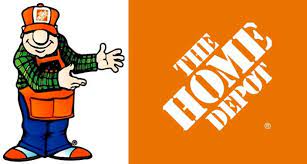Victorinox History & Stories
Victorinox is a Swiss knife and cutlery manufacturer that was founded in 1884 by Karl Elsener in the town of Ibach, Switzerland. The company is best known for creating the Swiss Army Knife, which has become an iconic symbol of Swiss ingenuity and precision.
Originally named “Schweizerische Messerschmiede Gesellschaft” (Swiss Cutlers’ Association), the company was renamed “Victoria” after Elsener’s mother, and later changed to “Victoria and Roi” after Elsener’s father’s name. In 1921, the company was renamed again to “Victorinox” by Elsener’s son, who combined the words “Victoria” and “inox” (the French word for stainless steel).

During World War II, Victorinox became a major supplier of Swiss Army Knives to the Swiss Army, as well as other armies around the world. After the war, the company expanded its product line to include household and professional knives, and in 1989, it acquired its rival company, Wenger, which also produced Swiss Army Knives.
Today, Victorinox is still family-owned and operated, with the fourth generation of the Elsener family leading the company. In addition to Swiss Army Knives and cutlery, Victorinox produces a wide range of products, including watches, luggage, and apparel. The company is headquartered in Ibach, Switzerland, and has operations and retail locations around the world.
Original versus Genuine
During 1908 to 2005, the delivery of knives to the Swiss Armed Forces was shared with Wenger. A compromise between the two companies stated that Victorinox would market their knives as the “Original Swiss Army Knives”, while Wenger would market theirs as “Genuine Swiss Army Knives”. Wenger was acquired by Victorinox in 2005. Knives actually made for the army (as opposed to the generic “Swiss Army” trademark) are known as Soldatenmesser (“soldier knives”).
These were produced in five generations, known by the date of their introduction as models 1890, 1908, 1951, 1961 and “08” (with minor variants within each generation). Model 1890 was originally produced by Wester & Co, Solingen, and produced by Elsenser in competition with the Solingen manufacturer. Models 1908 and 1951 were also produced by several companies in Germany and Switzerland. Model 1961 was produced exclusively by Victorinox and Wenger, and Model 08, introduced after the acquisition of Wenger, is exclusively manufactured by Victorinox
A few stories related to Victorinox:
- The origin of the Swiss Army Knife: The Swiss Army Knife was first created in the late 1800s, when the Swiss Army was looking for a new folding pocket knife to equip its soldiers. The knife was designed to be lightweight, compact, and versatile, with a variety of tools that could be used for a wide range of tasks.
- The Apollo 11 mission: In 1969, the Apollo 11 mission to the moon was equipped with Victorinox knives, which were used by the astronauts to collect rock samples and perform other tasks on the lunar surface.
- The rescue of a trapped hiker: In 2006, a hiker in the Swiss Alps became trapped under a boulder and was unable to free himself. The local rescue team used a Victorinox Swiss Army Knife to cut through the rope that was holding the boulder in place, freeing the hiker and saving his life.
- The world’s largest Swiss Army Knife: In 2012, Victorinox created the world’s largest Swiss Army Knife, which featured 141 different tools and weighed over 2 pounds. The knife was displayed at the company’s headquarters in Switzerland and later sold at an auction for over $70,000.
- The “One-Hand” series: In the 1990s, Victorinox introduced its “One-Hand” series of knives, which featured a blade that could be opened and closed with just one hand. These knives were particularly popular with sportsmen and outdoor enthusiasts who needed to be able to use their knife while holding onto something else, like a fishing rod or a tree branch.




